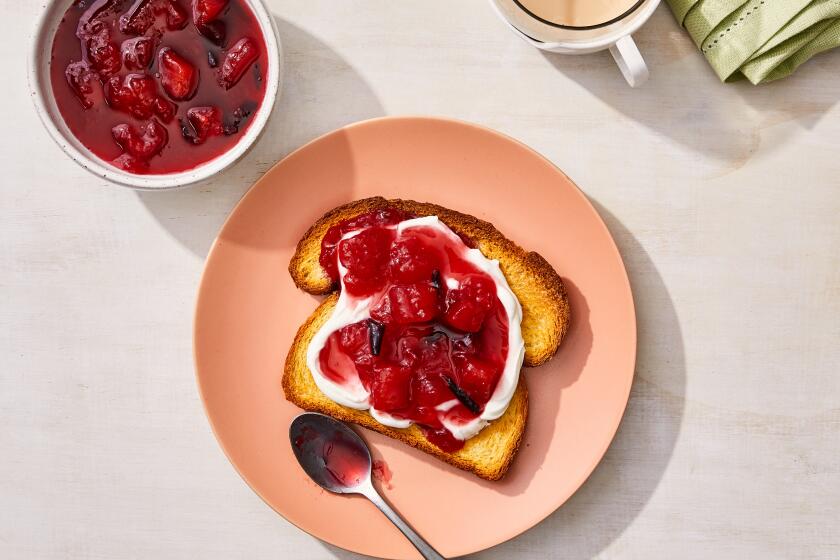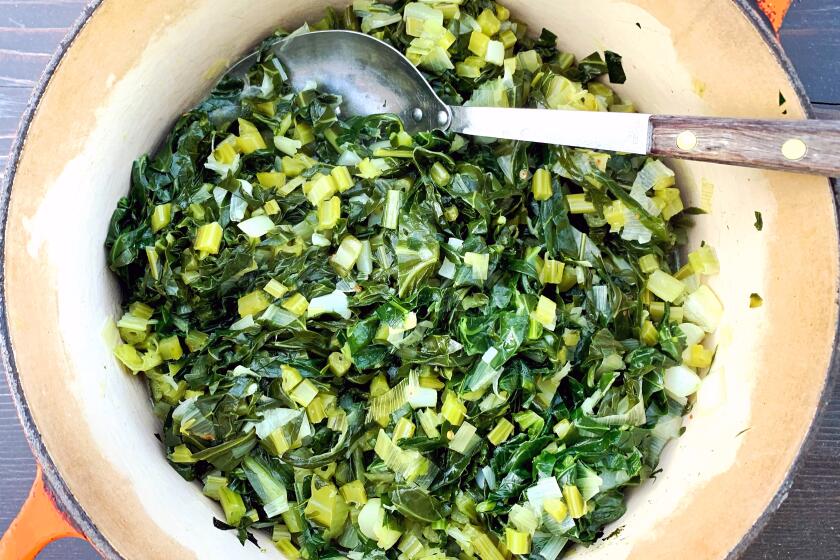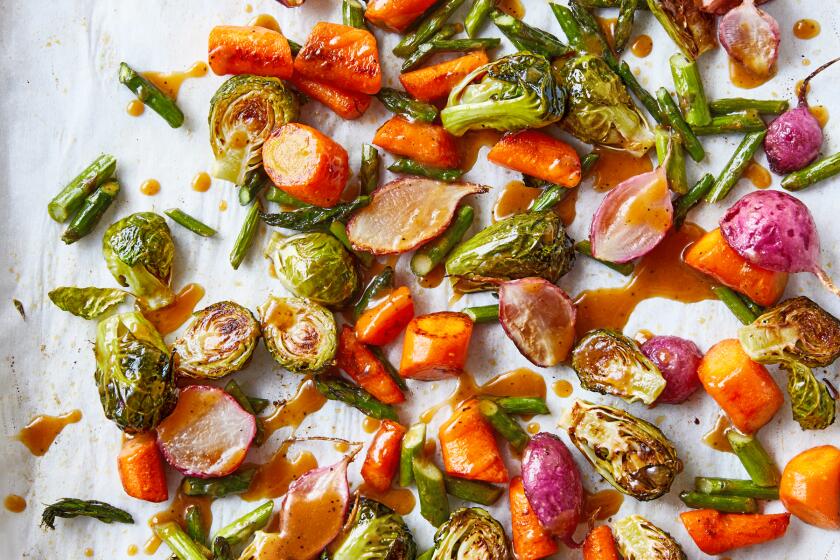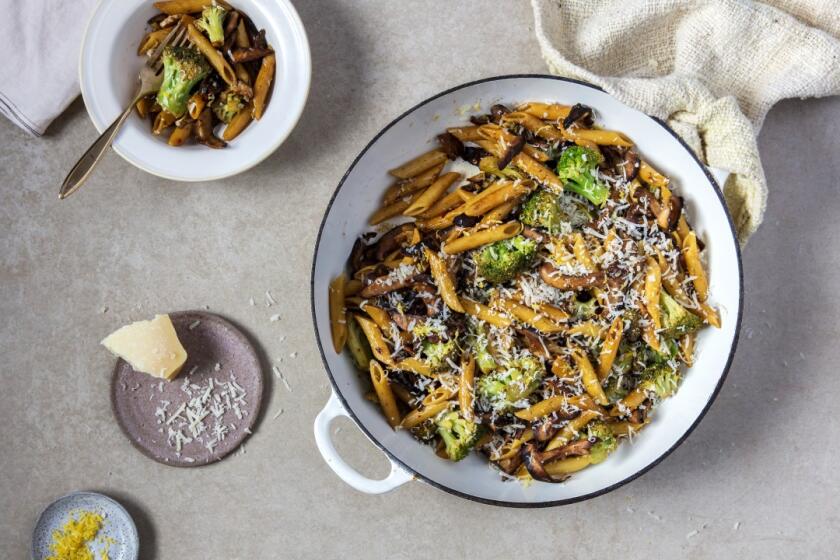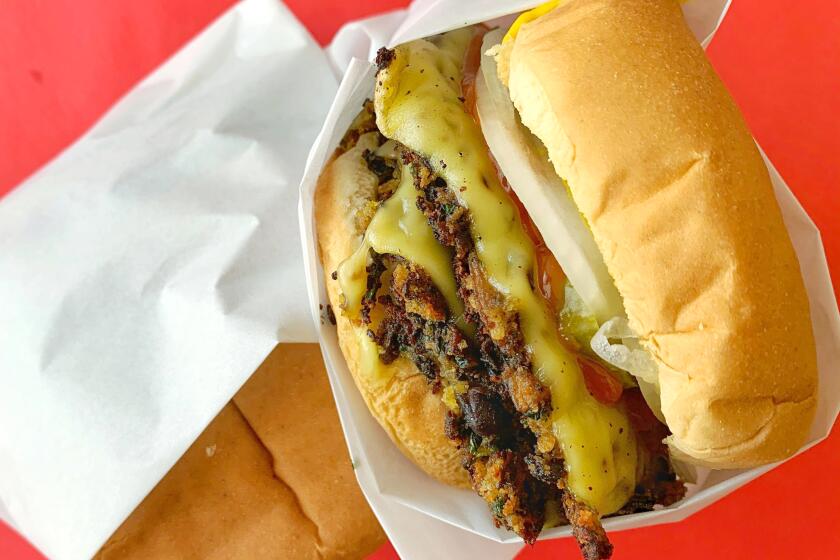Lean into vegetarian and vegan cooking while summer vegetables are at their peak
- Share via
I went vegan a couple of years ago and kept it up for eight strong months. During that time, I didn’t just not eat meat, but I also changed my whole way of thinking around how I eat vegetables, period. Even now, I eat meat only occasionally and try to eat vegetarian or vegan meals as much as possible. In California, that’s much easier because the produce stands heads and shoulders above the rest. After eating lots of comfort food during quarantine and relying on meat-heavy takeout, I’m once again resetting my diet by focusing on eating all the vegetables I can get my hands on. And there’s no better time for veg-forward eating than summer, when vegetables are at their peak.
Get our Cooking newsletter
Get a taste of Los Angeles — and the world — with recipes and kitchen tricks from the L.A. Times’ Cooking newsletter.
You may occasionally receive promotional content from the Los Angeles Times.
Breakfasts lately have been a bowl of cashew yogurt (my favorite is from Blöde Kuh) topped with a giant handful of granola and half a basket of fresh raspberries, blueberries or blackberries. When I want something handheld, I opt for a thick slab of sourdough toast smeared with almond butter and a wave of homemade plum jam (a great use for all the extra plums I can’t stop myself from buying). For lunch, I feast on giant salads of greens and leftover chopped vegetables and use Lodge’s vegan Caesar salad or APL’s kale salad (minus the parm) as my guides. And then at dinnertime, I love a pile of sugar snap peas, yu choy or any other seasonal greens, either steamed with garlic or stir-fried until lightly singed at their edges. I pair it with tofu, chickpeas or tempeh, and top everything with ginger-scallion sauce or a sweet miso dressing. If I feel like pasta, I turn to my standby dish flavored with caramelized lemons. And when the weekends come, I make sure not to deny myself a burger, but instead of eating ones made with Beyond or Impossible meat substitutes, I’m making my black bean and mushroom burgers with all the traditional fixin’s. It’s a way to enjoy all the wonderful ways to eat vegetables at any time of day.
Birthday Plum Jam
If you’re a plum fanatic like my colleague Genevieve Ko and me, make her jam — it’s the best spread for your morning toast.
Sauteed Collard Greens
Lightly sautéed, keep bowlfuls of these cooked greens in your fridge to have a hearty and flavorful side dish at the ready whenever you want it.
Umami-Roasted Vegetables
These get better the longer they sit with the dressing, which flavors them to their core.
Caramelized Lemon Pasta With Mushrooms and Broccoli
Caramelized lemon adds a ton of brightness and flavor to this vegetarian pasta. Use any greens and mushrooms you have to make it.
Black Bean and Mushroom Burgers
Treat yourself to veggie burgers that are thin and packed with meaty flavor and texture.
Ask the cooks
Instructions for cooking both broth and dal often instruct you to skim the froth that emerges when you start to cook. I think that this makes sense with broth to improve its appearance (clarity) as well as to remove objectionable items. But I don’t have any idea what function it might serve for dal. Can you clarify this?
— Lee Ballance
You’re already on the right track, Lee. The foamy matter that rises to the top of various ingredients boiling in water is often called “scum” and can be anything like impurities within animal bones or good old-fashioned dirt. When boiling meat and vegetables for stock, you want to remove this scum to get a clear broth but also to remove those impurities, which might impart the stock with an off flavor. The foam that rises to the top of dal, however, is the same as what happens when you boil pasta: lots of proteins and starches rise to the surface. If you don’t skim the scum, it will stay with the pulses once they’re cooked. Technically, there’s nothing wrong with keeping the foam in dal since it won’t affect the flavor. Remove it only if you want a more clear liquid; unlike with stock, this is for aesthetic reasons only.
Have a cooking question?
Eat your way across L.A.
Get our weekly Tasting Notes newsletter for reviews, news and more.
You may occasionally receive promotional content from the Los Angeles Times.
